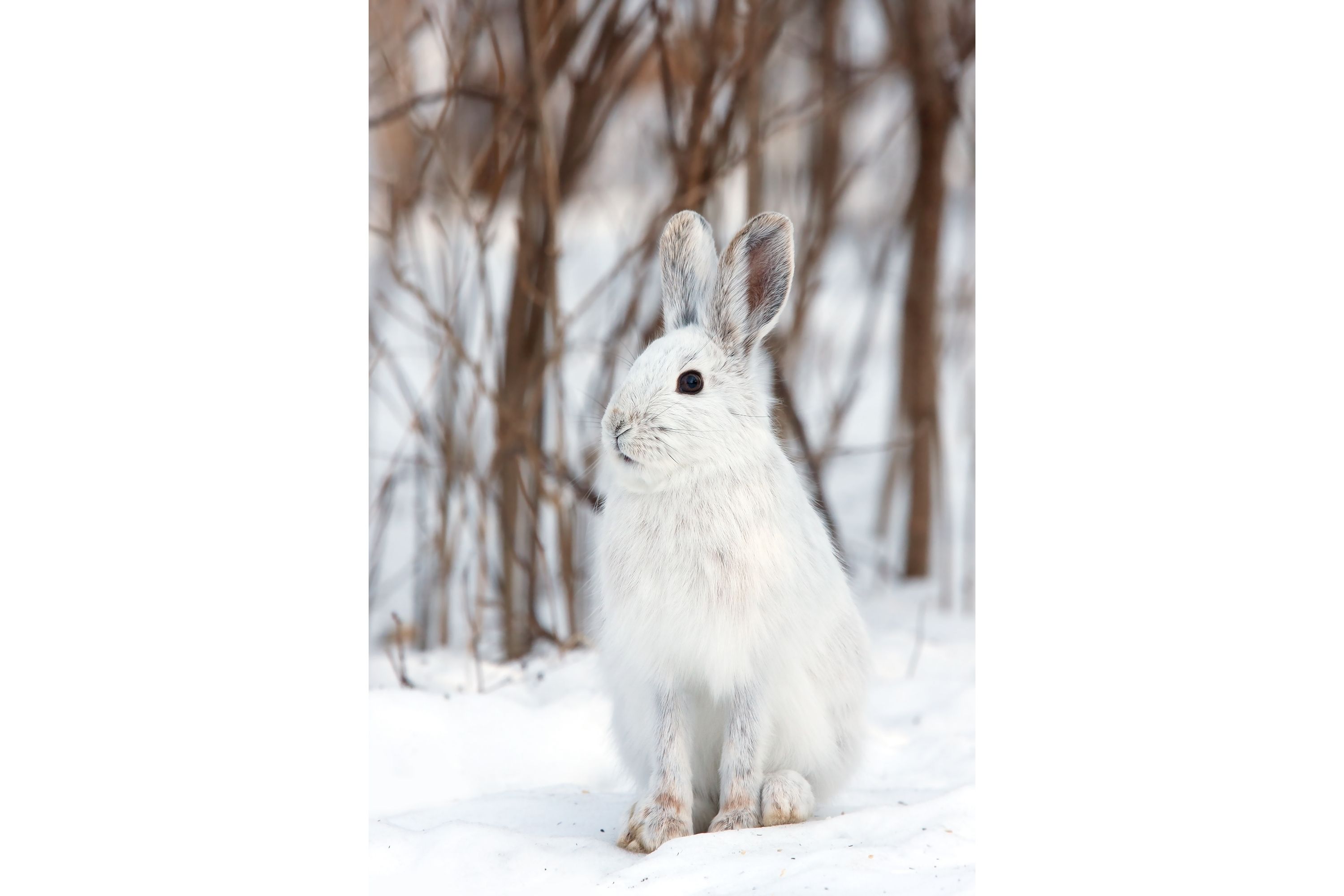Snowshoe hare
(Lepus americanus)

Description
The snowshoe hare (Lepus americanus), also called the varying hare or snowshoe rabbit, is a species of hare found in North America. It has the name "snowshoe" because of the large size of its hind feet. The animal's feet prevent it from sinking into the snow when it hops and walks. Its feet also have fur on the soles to protect it from freezing temperatures. For camouflage, its fur turns white during the winter and rusty brown during the summer. Its flanks are white year-round. The snowshoe hare is also distinguishable by the black tufts of fur on the edge of its ears. Its ears are shorter than those of most other hares. In summer, it feeds on plants such as grass, ferns, and leaves; in winter, it eats twigs, the bark from trees, and plants and, similar to the Arctic hare, has been known to occasionally eat dead animals. It can sometimes be seen feeding in small groups. This animal is mainly active at night and does not hibernate. The snowshoe hare may have up to four litters in a year, which average three to eight young. Males compete for females, and females may breed with several males. The snowshoe hare's fur is rusty brown in the spring and summer, and white in the winter. It also always has a gray underbelly, and black on the tips and edges of its ears and tail. It has very large hind feet, and dense fur on their soles. The snowshoe hare's ears are not as long as some other species of hares' ears. In the winter, it turns a bright white to blend in with the snow. Snowshoe hares range in length from 413 to 518 mm, of which 39 to 52 mm are tail. The hind foot, long and broad, measures 117 to 147 mm in length. The ears are 62 to 70 mm from notch to tip. Snowshoe hares usually weigh between 1.43 and 1.55 kg. Males are slightly smaller than females, as is typical for leporids. In the summer, the coat is a grizzled rusty or grayish brown, with a blackish middorsal line, buffy flanks and a white belly. The face and legs are cinnamon brown. The ears are brownish with black tips and white or creamy borders. During the winter, the fur is almost entirely white, except for black eyelids and the blackened tips on the ears. The soles of the feet are densely furred, with stiff hairs (forming the snowshoe) on the hind feet.
Taxonomic tree:







